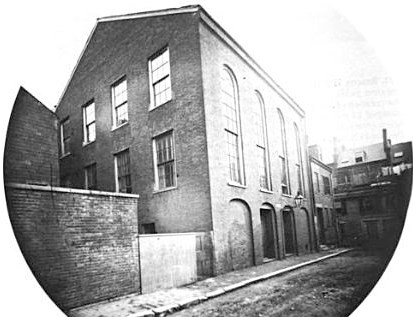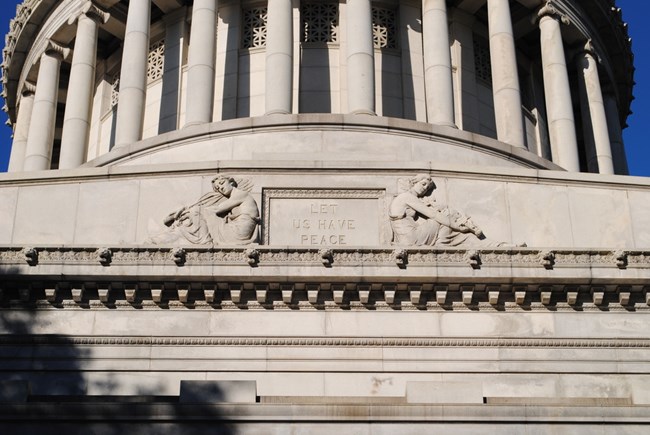Part of a series of articles titled Creative Teaching with Historic Places: Selections from CRM Vol 23 no 8 (2000).
Article
On-Site Learning: The Power of Historic Places

https://commons.wikimedia.org/wiki/File:AfricanMeetingHouse_ca1860_SmithCourt_Boston.png
Published by the National Park Service, Cultural Resources
by James Oliver Horton
A mix of unskilled, illiterate day workers and well-tutored professionals gathered at the African Meeting House on Boston’s Beacon Hill in 1863. From the pulpit in the sanctuary, abolitionist, editor, and former slave Frederick Douglass urged Black men to answer the nation’s call for recruits for the new 54th Massachusetts Infantry. Blacks had demanded the right to bear arms for the nation since the start of the Civil War, but for two years they were refused. Then, after US casualties rose to alarming rates, the Congress and President Abraham Lincoln reversed themselves. African Americans were recruited into military service.
It was fitting that when the call for Black troops finally came, Boston’s African Meeting House played a major role. This place was a church, school, and political, social, and cultural forum; the hub of Boston’s Black community. Here in the winter of 1831, radical white abolitionist William Lloyd Garrison gathered with Blacks and progressive whites to form the New England Antislavery Society. Here, community meetings planned strategy for the city’s underground railroad. And here, angry abolitionists protested the hated Fugitive Slave Law of 1850, vowing that no fugitive would be taken from the city. Today, the African Meeting House remains a special place filled with the spirit of a time when Boston stood as the symbol of antislavery reform and a progressive commitment to freedom. This building is tangible proof of the dedication of many Americans, Black and white, who took seriously the words of America’s declaration of natural rights and human liberty. Standing in this place 150 years later, the visitor who understands its history is all but overwhelmed by the power of its legacy.
The African Meeting House and the other historic sites along Boston’s Black Heritage Trail are marvelous spaces for teaching American history. Recently, Lois Horton and I revisited Boston’s Beacon Hill district, the site of the city’s 19th-century African-American community, in preparation for the publication of the revised version of our book, Black Bostonians. Once again, we were struck by the importance of physical location for bringing the past to life. It is much easier and much more meaningful to write about events that shaped history when you can stand in the places where those events occurred. It is easier to understand the people of history when you can be in the spaces that they occupied, the spaces where they lived their lives. Whether in Boston attempting to capture the lives of 19th-century Black people, on the Little Big Horn battleground steeped in Native American resistance to American expansion, or at Pearl Harbor thinking back on the Sunday morning in 1941 that changed the world, historic places give concrete meaning to our history and our lives and no spoken or written word alone can do.

Given these findings, the Teaching with Historic Places (TwHP) program of the National Register of Historic Places takes on enormous significance. For almost a decade, this award-winning program has sponsored workshops to help educators and those committed to historic preservation make use of historic places to teach students and the general public about American history. School teachers have been inspired to organize history workshops in their home schools, and National Park Service (NPS) and other interpreters have found the program a valuable source for broadening their interpretations.
For those classroom teachers and their students who do not have immediate access to the actual historic sites, TwHP provides packages of historical documents that bring students into contact with the primary sources of history. Reading historical sources directly allows students to make their own decisions about the meaning of the past and the intentions of historical characters. As any research historian understands, confronting the primary documents of history and reading the actual words of those who made history are the next best thing to being there. It is not surprising that historic places and primary documents promote curiosity and inspire learning. They are the tangible stuff of the past. Novelists have always recognized the power of painting word pictures and narrative historians attempt to engage reader imagination in telling their historical tales, but nothing can situate a person in history like being in the place where that history happened. This then gives the guardians of historic places special opportunities. They can engage the visitor’s imagination and really teach lasting lessons.
In this regard, historical context becomes particularly important. Although furnishings of historic houses, troop movements of a specific battle site, or details of a person’s life may be critically important to a place, the value of any specific site goes far beyond the particulars of that site. Grant’s Tomb is certainly significant for its direct association with the death of the former general and president, but it is also a vehicle for teaching about the presidency during a time of crisis, the nation’s attempt to negotiate the uncharted waters of post-Civil War Reconstruction, and issues directly associated with the major debates over race and regional loyalty so critical during Grant’s administration. As the site of pro-war protest during the Spanish American War, World War I, and World War II, the tomb also can spark discussions about war and protest in the 20th century. NPS interpreters foremost among all educators have access to the audience that needs to understand these complex stories. Yet dealing with complex, sometimes difficult issues in a public setting, with a host of distractions, and a limited time, can be a tall order. Interpreters cannot be expected to provide a comprehensive learning experience to visitors who may stay only a few minutes at any particular site. Interpreters must be familiar enough with the context of their sites to judge the amount of material appropriate for a given audience. Any good historic house guide understands that visitors cannot be expected to absorb all that that guide knows about the subject. Selective presentation is the stock-in-trade of accomplished professional interpreters, as it must be in setting the context for historic sites. The more historically sophisticated the interpreters, the easier it is to tailor a presentation for a specific audience.
The material to master is overwhelming, and none will ever know it all. Yet, interpreters can know enough to provide the context that will explain to visitors the importance of specific sites to the broader national history. Obviously this will never be easy but that is what accomplished professionals can do. NPS models already in place, such as the TwHP program, point the direction. They must be encouraged and broadened. Historic places provide the opportunity for professional interpreters to teach the public. Practicality demands that the goal not be an exhaustive education, but raising questions that may send visitors in search of their own answers.
Note:
Roy Rosenzweig and David Thelen, The Presence of the Past: Popular Uses of History in American Life (New York: Columbia University Press, 1998), 21, 32.
At the time of publication, James Oliver Horton was the Benjamin Banneker Professor of American Studies and History at The George Washington University and Director of the African American Community Studies Project at the Smithsonian Institution’s Museum of American History.
Last updated: July 2, 2019
